#Enterprise Application Integration
Explore tagged Tumblr posts
Text
7 Key Barriers Enterprises Must Conquer for Digital Transformation in 2025
Digital transformation isn’t just a buzzword anymore- it’s essential for staying competitive in today’s business world. As industries shift to data-driven, automated, and cloud-based operations, the need to modernize becomes critical. But change doesn’t come easy. Companies must navigate a host of transformation obstacles that can stall or derail progress. To empower enterprises to lead boldly in 2025, we’ve highlighted the key digital transformation challenges and practical ways to tackle them.

1. Lack of a Change Management Strategy
One of the most overlooked digital transformation challenges in 2025 is the absence of a well-defined change management plan. A successful transformation depends on how well the people in your organization adapt. Without a strategy to guide employees through the transition, businesses may struggle with resistance, miscommunication, and slow adoption.
A proactive change management plan addresses stakeholder concerns, sets realistic timelines, and creates clear communication pathways. It should also identify risks and involve leadership from the start to inspire alignment and buy-in.
2. Budget Constraints and Misaligned Investments
Limited budgets remain one of the biggest hurdles in digital transformation efforts. Organizations must make every dollar count, especially when implementing new technologies that require upfront investments.
The solution? Align transformation goals with business objectives and focus on cost-efficient strategies such as cloud-based solutions or hybrid platforms. These offer flexibility, scalability, and faster time-to-value without straining your budget.
3. Complex Technology Integration
Integrating emerging technologies with existing systems remains a core challenge. From legacy infrastructure to hybrid cloud environments, incompatibilities can cause major delays, inefficiencies, and data silos.
TGH addresses these transformation obstacles with deep expertise in enterprise application integration. Using platforms like Boomi and MuleSoft, we build secure, scalable integration frameworks that ensure smooth data flow and system interoperability. Our solutions reduce IT complexity while future-proofing your architecture.
4. Skill Gaps and Talent Shortages
Many digital transformation efforts fall short because there aren’t enough skilled professionals to drive them forward. From API management to cybersecurity, organizations require niche expertise that in-house teams may not possess.
To overcome these barriers, enterprises must either invest in upskilling programs or partner with integration experts like TGH. Our certified professionals bring hands-on knowledge of modern platforms, best practices, and tools- empowering your teams to succeed.
5. Data Security and Compliance Risks
Data breaches, ransomware, and compliance violations can significantly derail transformation efforts. As systems become more interconnected, so does the risk of exposure.
Organizations must prioritize cybersecurity across every layer of their enterprise digital strategy. Best practices include implementing encryption protocols, conducting routine security audits, adopting secure cloud solutions, and ensuring compliance with GDPR, HIPAA, and other relevant standards.
6. Employee Resistance to New Systems
People who aren’t keeping up with the latest technology often resist change. These employees may worry about job security or believe their current workflows are still sufficient.
To overcome digital transformation barriers like these, organizations must focus on user adoption. This includes delivering hands-on onboarding, continuous support, and clear communication about the benefits of transformation. TGH enables real-time enterprise application integration, helping teams embrace automation with confidence.
7. Difficulty Measuring ROI
Unlike conventional projects, the return on investment from digital transformation isn’t always immediately apparent. Gains such as increased agility, better user experience, and data-driven decision-making take time to materialize.
Still, ROI measurement is crucial. Enterprises can leverage API management solutions to track performance metrics, streamline data visibility, and enhance operational efficiency. The use of reusable APIs and smart integrations improves time-to-value, justifying the investment and reducing scepticism.

Why Partner with TGH?
TGH delivers trusted strategies to help tackle digital transformation challenges in 2025. We deliver robust integration frameworks, seamless API connectivity, and secure architecture design that aligns with your unique goals.
Our expertise spans:
Cloud and hybrid integration
Boomi and MuleSoft implementations
Real-time automation
Enterprise-grade API lifecycle management
Advisory and managed support services
Final Takeaway
Digital transformation isn’t a one-and-done initiative- it’s an ongoing journey of growth and innovation. While the challenges are real, they can absolutely be overcome. With the right strategy, talent, and integration partner, your enterprise can unlock powerful innovations and achieve long-term agility.
Start your journey today. Let TGH be your guide.
TGH Software Solutions Pvt. Ltd [email protected]
FAQs
What key challenges are businesses facing with digital transformation in 2025?
Some of the biggest challenges include lack of change management, budget constraints, integration complexities, skill gaps, and data security threats.
How can enterprises overcome digital transformation obstacles?
By aligning digital goals with business priorities, investing in upskilling, adopting secure integration platforms, and working with expert partners like TGH.
What does enterprise application integration mean, and why does it matter for businesses?
It refers to linking different software applications so they function together as one cohesive system. It improves workflow efficiency, data sharing, and decision-making.
How does API management support digital transformation?
API management enables scalable, secure communication between systems, simplifies third-party integrations, and accelerates digital deployment.
Why choose TGH for digital transformation support?
TGH combines technical excellence with business-first strategies, offering tailored integration services, 24/7 support, and a commitment to measurable outcomes.
#Transformation Obstacles#Digital Transformation#Enterprise application integration#API management solutions#digital transformation challenges 2025#overcoming digital transformation barriers#enterprise digital strategy#common digital transformation issues
0 notes
Text

Enterprise Application Integration Solutions in Dubai, UAE | Microsoft, Oracle
Seamlessly integrate your enterprise applications with our solutions. Connect Microsoft, Oracle, and more for optimized business operations.
#enterprise application integration#enterprise integration platform#app integration#Integration Solutions#oracle integration#microsoft integration#erp integration#microsoft erp
0 notes
Text
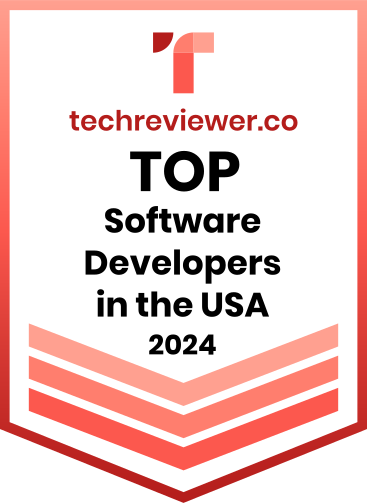
Pell Software is proud to announce that we have been selected as a top US software development company by Techreviewer.co in 2024, for the second year running!
Our top rated software engineering team has helped hundreds of clients grow and improve their businesses by streamlining their operations and integrating their data.
We're excited for another year full of opportunities to help our clients grow and we're proud to be recognized for such an award!
#business software#custom software development#api integration#quickbooks#custom software solutions#custom software#quickbooks enterprise#custom web application development#quickbooks integration#software development
1 note
·
View note
Text
⚙️Websphere Middleware Services Maximize Efficiency with Websphere Middleware Services
🔄Seamless Application Integration Connect and integrate diverse applications seamlessly across your business
💼Robust & Scalable Platform Ensure high scalability for mission-critical enterprise applications
🛡️Security & Reliability Protect your business with Websphere’s built-in security features
📊Continuous Performance Monitoring Monitor and optimize the performance of your Websphere infrastructure
💪Empower Your Business with Websphere Middleware 📧 Email: [email protected] 📞 Phone: +91 86556 16540
To know more about Websphere Middleware Services click here 👉 https://simplelogic-it.com/websphere-middleware-services/
Visit our website 👉 https://simplelogic-it.com/
💻 Explore insights on the latest in #technology on our Blog Page 👉 https://simplelogic-it.com/blogs/
🚀 Ready for your next career move? Check out our #careers page for exciting opportunities 👉 https://simplelogic-it.com/careers/
#Websphere#MiddlewareServices#Application#ApplicationIntegration#Integration#Scalable#Enterprise#Reliability#ContinuousPerformance#PerformanceMonitoring#WebsphereInfrastructure#SimpleLogicIT#MakingITSimple#MakeITSimple#SimpleLogic#ITServices#ITConsulting
0 notes
Text
How much do Java developers earn?
1. Introduction to Java Developer Salaries
What's the earning potential for Java developers? This is a hot topic for students, new grads, and folks looking to get into software development. With the growth of full stack dev, cloud tech, and enterprise software, Java remains essential. Salaries depend on location, experience, and skills. For students in Coimbatore studying Java, knowing what to expect in the industry is key.
Key Points:
- Java developers are in demand across various fields.
- Knowing Spring Boot and full stack skills can boost your pay.
2. Java Developer Salary for Freshers
So how much can freshers make? Entry-level Java developers in cities like Coimbatore usually earn between INR 3 to 5 LPA. Completing a Java Full Stack Developer course typically leads to better pay since it covers a wider skill set. Employers often look for hands-on experience, which is why doing Java mini projects or internships is important.
Key Points:
- Fresh Java developers start around INR 3 LPA.
- Getting certified in Java can help you land a job.
3. Experienced Java Developer Salaries
With 3-5 years under your belt, what can you expect? Salaries typically range from INR 6 to 12 LPA. Those who take a Java training course in Coimbatore often find they earn more. Companies want people with strong backend skills and experience with tools like Spring, Hibernate, or Microservices.
Key Points:
- Mid-level Java developers can earn between INR 6 to 12 LPA.
- Knowledge of Spring and REST APIs can increase your salary.
4. Senior Java Developer Salary
InsightsFor those at a senior level with over 7 years of experience, earnings can start at INR 15 to 25 LPA. This varies based on company size and responsibilities, plus keeping up with new tech is crucial. Attending weekend Java classes or coaching sessions can help keep skills fresh.
Key Points:-
- Senior Java developers generally earn over INR 15 LPA.
- Full stack skills can lead to higher pay.
5. Java Full Stack Developer Salaries
People who complete a Java Full Stack Developer Course in Coimbatore often snag higher-paying jobs. Full stack developers with skills in Java, React, and DevOps can earn about 20% more than those focused solely on Java. If you're curious about Java salaries, investing in full stack training is a smart move.
Key Points:
- Full stack Java developers can earn about 20% more.
- Having both frontend and backend knowledge is important.
6. Salary Trends in Coimbatore and Tier-2 Cities
In Coimbatore, students of Java courses often ask about earning potential. Starting salaries might be a bit lower than in metro areas, but there’s room for growth. Remote work options are now more common, allowing locals to earn metro-level salaries.
Key Points:
- Java jobs in Coimbatore offer competitive pay.
- Remote work opens doors to higher salaries.
7. Java Certification and Salary Growth
Getting certified can mean a 30-40% pay bump compared to non-certified peers. Following a structured Java course helps build strong skills. Recruiters appreciate learning paths and real-world experience from platforms offering Java programs.
Key Points:
- Java certifications help boost your credibility.
- Structured training can get you better job offers.
8. Demand for Java Developers in 2025
Looking ahead, there’s expected growth of 15% in Java jobs by 2025. More students are signing up for Java Full Stack Developer Courses in Coimbatore, and chances for freshers are expanding. Mastering Java basics through tutorials can help set you up for success.
Key Points:
- Job openings for Java developers are on the rise.
- Full stack training fits well with job market trends.
9. Java Developer Skills That Influence Salaries
Earnings for Java developers often depend on skills like Spring Boot, Microservices, REST APIs, and cloud integration. Regular practice with Java exercises, internships, and coaching can create a strong candidate.
Key Points:
- Skills in demand directly impact salary.
- Ongoing learning is vital for career growth.
10. Conclusion and Brand Mention
So how much do Java developers actually make? It varies, but with the right skills and certifications, Java can lead to a rewarding job. Whether you’re just starting out or looking to advance, getting good training is key. If you want to begin or progress in your career, check out Xplore It Corp for Java courses and training designed to help you succeed.
Key Points:
- Look for recognized training programs.
- Xplore It Corp can help you close skills and salary gaps.
FAQs
Q1. How much do Java developers earn after certification?
A certified Java developer can earn 30-40% more than non-certified ones.
Q2. Are Full Stack Developer salaries higher?
Yes, full stack developers generally make 20-25% more due to their wider range of skills.
Q3. Does location affect salaries?
Absolutely, metro cities tend to pay more, but remote jobs are helping close that gap in places like Coimbatore.
Q4. Is a Java internship necessary?
Not strictly necessary, but internships can really enhance a resume, especially for those just starting out.
Q5. What's the best way to learn Java step by step?
Join a structured course, like those from Xplore It Corp, and practice with Java tutorials and coding exercises.
#Java programming language#Object-oriented programming in Java#Java development tools#Java code examples#Java frameworks (Spring#Hibernate)#Java for web development#Core Java concepts#Java backend development#Java IDE (Eclipse#IntelliJ)#Java Virtual Machine (JVM)#Java syntax and structure#Java API integration#Java debugging tools#Java software applications#Java interview preparation#Java certification training#Java app development#Java database connectivity (JDBC)#Java deployment techniques#Enterprise Java development.
0 notes
Text
0 notes
Text
Enterprise Application Integration Market Size, Share, Analysis, Forecast, and Growth Trends to 2032: North America and Asia-Pacific Lead Global Expansion

The Enterprise Application Integration (EAI) Market size was valued at USD 13.49 billion in 2023 and is expected to reach USD 43.36 billion by 2032 and grow at a CAGR of 13.85% over the forecast period 2024-2032.
Enterprise Application Integration Market is undergoing a transformative shift as organizations seek to streamline operations, improve data flow, and drive automation across complex IT infrastructures. Businesses across industries are increasingly adopting integration solutions to connect disparate applications, optimize workflows, and achieve operational agility.
Enterprise Application Integration Market continues to evolve with the rise of cloud-based platforms, API-led connectivity, and hybrid integration models. This rapid technological adoption is reshaping enterprise strategies, enabling seamless collaboration across departments, systems, and geographies.
Get Sample Copy of This Report: https://www.snsinsider.com/sample-request/2541
Market Keyplayers:
IBM (IBM App Connect)
Microsoft (Azure Logic Apps)
Oracle (Oracle Integration Cloud)
SAP (SAP Cloud Platform Integration)
MuleSoft (Anypoint Platform)
TIBCO Software (TIBCO Cloud Integration)
Dell Boomi (Boomi Integration)
Informatica (Informatica Cloud Data Integration)
SnapLogic (SnapLogic Integration Platform)
Salesforce (Salesforce Integration Cloud)
Amazon Web Services (AWS) (AWS Glue)
ServiceNow (ServiceNow IntegrationHub)
Jitterbit (Jitterbit Harmony)
Workato (Workato Integration Platform)
Adeptia (Adeptia Connect)
Kong (Kong Gateway)
Celigo (Celigo Integrator.io)
WSO2 (WSO2 Enterprise Integrator)
Axway (Axway AMPLIFY Integration)
SAP Concur (Concur Integration Services)
Market Analysis The enterprise application integration market is being propelled by rising digital transformation initiatives and the growing demand for real-time data exchange. Enterprises are challenged by siloed systems and legacy infrastructure, driving them toward robust integration solutions. This market is also benefiting from the expansion of e-commerce, mobile applications, and IoT technologies, which demand unified data access and consistent system performance.
Market Trends
Increasing adoption of cloud-native integration platforms
API management and microservices driving agile IT architecture
Integration Platform as a Service (iPaaS) gaining traction among SMEs
Emphasis on low-code and no-code integration tools
Strategic partnerships and mergers enhancing integration capabilities
AI and ML applications supporting intelligent automation in EAI
Market Scope The future scope of enterprise application integration is wide and promising.
Enables real-time decision-making through unified data
Facilitates cross-functional and cross-platform collaboration
Enhances scalability and adaptability in business processes
Reduces IT complexity and improves ROI on existing systems
Powers digital transformation by enabling seamless data flow
Market Forecast The enterprise application integration market is poised for sustained growth, fueled by the convergence of digital technologies, the need for operational efficiency, and increased IT investments. As organizations prioritize interconnected systems for superior customer experience and internal synergy, the demand for agile, secure, and scalable integration solutions will rise. Innovation in AI-powered integration and the continued shift toward hybrid cloud ecosystems are set to amplify market opportunities and drive competitive differentiation.
Access Complete Report: https://www.snsinsider.com/reports/enterprise-application-integration-market-2541
Conclusion In a world where agility defines success, enterprise application integration is no longer optional—it is a necessity. Organizations that embrace integration technologies today are positioning themselves for long-term efficiency, innovation, and competitive edge. As enterprises unlock the true value of connected systems, the integration market will remain a cornerstone of digital excellence.
About Us:
SNS Insider is one of the leading market research and consulting agencies that dominates the market research industry globally. Our company's aim is to give clients the knowledge they require in order to function in changing circumstances. In order to give you current, accurate market data, consumer insights, and opinions so that you can make decisions with confidence, we employ a variety of techniques, including surveys, video talks, and focus groups around the world.
Contact Us:
Jagney Dave - Vice President of Client Engagement
Phone: +1-315 636 4242 (US) | +44- 20 3290 5010 (UK)
0 notes
Text
Evaluating Where to Implement Agentic AI in Your Business
New Post has been published on https://thedigitalinsider.com/evaluating-where-to-implement-agentic-ai-in-your-business/
Evaluating Where to Implement Agentic AI in Your Business


Agentic AI has the potential to reshape several industries by enabling autonomous decision-making, real-time adaptability, and proactive problem-solving. As businesses strive to enhance operational efficiency, they face the challenge of deciding how and where to implement agentic AI for maximum impact. From supply chain optimization to predictive maintenance and customer experience enhancement, enterprise leaders must carefully evaluate which areas of their business stand to gain the most benefit from agentic AI. A strategic framework for assessing AI integration opportunities is critical to ensuring that investments align with business objectives, drive measurable outcomes, and maintain a balance between automation and human oversight.
Understanding AI Evolution
To understand the role of agentic AI, we must first distinguish it from traditional AI implementations. Historically, enterprises have leveraged AI to analyze historical data, generate insights, and even make recommendations. However, these systems generally require human intervention to execute decisions and workflows. For example, a machine learning algorithmic system generates new observations, refines its models, and improves over time but never makes decisions, whereas standard AI recommends actions based on its learned experiences, potentially generating one action to move ahead a single step.
Agentic AI introduces autonomy into the equation. Instead of merely suggesting actions, agentic AI executes them, acting in real-time to solve problems and optimize workflows with multiple AI agents operating in parallel. The key differentiator lies in the concept of agents—independent AI entities that take action based on learning mechanisms and real-world conditions. A single AI agent might reorder inventory when stock runs low, while agentic AI—comprising multiple agents—could coordinate an entire supply chain response, adjusting procurement, transportation, and storage conditions dynamically.
Instead of executing a decision tree, agentic AI adapts based on real-time inputs, learning from its ever-changing environment and modifying its actions accordingly. For example, in food retail, a rule-based system might follow a structured compliance workflow—such as alerting a manager when a refrigeration unit exceeds a set temperature threshold. An agentic AI system, on the other hand, could autonomously adjust refrigeration settings, reroute impacted shipments, and reorder inventory—all without human intervention.
In a highly dynamic environment like airline logistics, a fully agentic AI network simultaneously analyzes all affected travelers, rebooks flights, notifies ground services, and communicates seamlessly with customer service representatives—all in parallel, reducing disruptions and improving efficiency.
Managing Agentic AI Autonomy Levels
As the AI evolution continues, agentic AI will gain more autonomy and handle increasingly complex decision-making scenarios. In the future, AI agents will collaborate across industries and make context-aware decisions. The challenge moving forward will be determining the right balance between full automation and human oversight for excursion management, mistake prevention, and system lockdowns. Businesses must carefully consider the risk thresholds for different workflows, implementing safeguards to prevent unintended actions while maximizing the potential gains from AI-driven advancements.
Leaders across industries should consider the areas where agentic AI is particularly valuable, where decision-making needs to be real-time, adaptive, and highly scalable. Key business functions that stand to benefit the most include supply chain and inventory management. Fleets of AI agents are able to monitor stock levels, predict demand fluctuations, and autonomously reorder products to reduce waste, avoid unnecessary loss, and finetune logistics outcomes.
In predictive maintenance, agentic AI analyzes equipment health, detects potential failures, and proactively schedules maintenance to reduce downtime. Compliance and risk management functions can also benefit, as AI oversees compliance workflows in regulated industries, automatically adjusting SOPs to meet evolving requirements.
Steps to Successful Agentic AI Adoption
To ensure successful agentic AI adoption, business leaders should follow a structured evaluation process.
Identify high-impact use cases by assessing business functions where real-time decision-making improves efficiency and reduces the administrative burden on customers or employees.
Define risk tolerance and oversight mechanisms by establishing safeguards, approval processes, and intervention points to balance AI autonomy with human oversight.
Ensure AI investments align with business objectives, focusing on applications that deliver measurable ROI and support broader strategic goals.
Start small and scale gradually by launching pilot programs in controlled environments before expanding agentic AI deployment across the enterprise.
Evaluate agentic AI programs regularly, refining models based on outcomes and a continuous improvement approach.
With the move to agentic AI, we’ll see a significant leap forward in enterprise automation, enabling businesses to move beyond insights and recommendations into autonomous execution. Successful implementation of agentic AI will require strategic consideration of workflow design, risk management, and governance structures. Business leaders who move quickly and thoughtfully will maximize efficiency, enhance resilience, and future-proof their operations.
#adoption#agent#Agentic AI#Agentic AI applications#agents#ai#AI adoption#ai agent#AI AGENTS#AI Autonomy#AI integration#applications#approach#automation#autonomous#Business#challenge#collaborate#compliance#continuous#customer experience#customer service#data#Decision Tree#deployment#Design#digi#efficiency#employees#enterprise
0 notes
Text
In this episode, we delve into the complexities of data integration services offering, exploring strategies to unify disparate data sources. Discover how businesses can streamline their data pipelines, enhance decision-making, and foster innovation through effective integration practices. Join us as we uncover the key to seamless data connectivity.
#Data Integration Service Offerings#Application Integration Service#Enterprise Integration Services#Data Integration Services#Data Integration
0 notes
Text
Mastering SwaggerHub Integrations for Seamless API Collaboration
Efficient API management requires tools that integrate design, testing, and documentation seamlessly. SwaggerHub is a central hub for collaborative API development, offering robust integrations with popular tools and platforms. These integrations extend its capabilities, enabling streamlined workflows and improving productivity across the API lifecycle.
This blog delves into the various integrations offered by SwaggerHub and how they enhance API design, development, testing, and deployment.
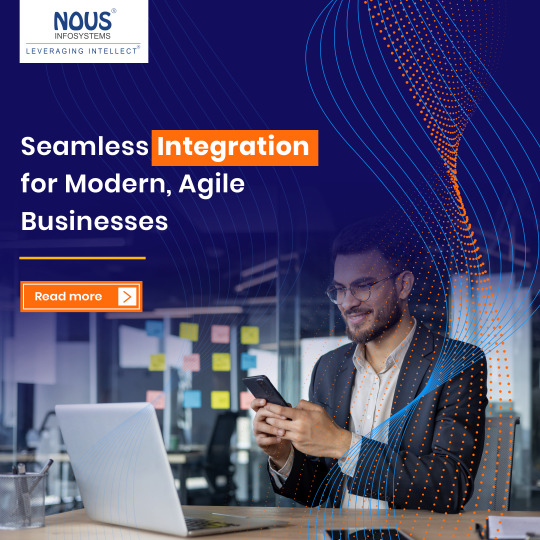
Understanding SwaggerHub’s Role in API Development
SwaggerHub simplifies the API lifecycle by providing a centralized platform for designing, documenting, and collaborating on APIs. With its support for Open-API specifications, teams can work together to ensure consistency, quality, and compliance.
However, the true strength of SwaggerHub lies in its integrations, which allow it to connect with external tools, enabling automation and efficient workflow management. These integrations cater to developers, testers, and DevOps teams, ensuring a unified experience.
Key SwaggerHub Integrations to Elevate API Workflows
Integrations are the backbone of modern API ecosystems, connecting diverse tools to create seamless workflows. SwaggerHub’s suite of integrations amplifies productivity by automating processes, fostering collaboration, and simplifying deployment. Here’s how these integrations enhance every stage of the API lifecycle.
Source Control and Versioning with Git Integrations
SwaggerHub integrates seamlessly with Git platforms like GitHub, GitLab, and Bit-bucket. This integration enables teams to manage API definitions directly within their source control systems.
The benefits of integrating SwaggerHub with Git platforms include:
Automate version control for API specifications.
Enable collaboration by syncing API changes across teams.
Ensure traceability with commit histories.
For instance, pushing API updates from SwaggerHub to a Git repository ensures all team members work on the latest version, minimizing conflicts and redundancy.
CI/CD Automation with Jenkins and Azure DevOps
Continuous integration and delivery pipelines are crucial for deploying APIs efficiently. SwaggerHub’s integrations with Jenkins and Azure DevOps allow organizations to automate API validation and deployment.
Use cases for integrating SwaggerHub with Jenkins and Azure DevOps include:
Validate Open-API definitions as part of the CI pipeline.
Deploy API gateways after successful validations.
Generate client SDKs and server stubs during builds.
Automating these tasks eliminates manual errors and accelerates the delivery process.
API Gateway Integrations for Simplified Deployment
SwaggerHub supports direct integration with popular API gateways like AWS API Gateway, Azure API Management, and Apigee. These integrations enable teams to publish APIs to their preferred gateway platforms effortlessly.
Below are the advantages of API Gateway Integrations:
Simplify API deployment to cloud-native environments.
Maintain consistent API documentation across platforms.
Reduce setup time for production readiness.
Publishing APIs from SwaggerHub to a gateway ensures consistent deployment and better scalability.
Collaboration with Project Management Tools
SwaggerHub integrates with tools like Jira and Confluence, bridging the gap between API developers and project managers. This integration ensures API documentation and development tasks are accessible within project management workflows.
Key Features of SwaggerHub’s integration with Jira and Confluence include:
Automatically link API updates to Jira issues.
Embed API definitions in Confluence pages for visibility.
Enhance communication between technical and non-technical teams.
These integrations foster transparency and help align development goals with business objectives.
Testing and Quality Assurance with Postman
SwaggerHub’s Postman integration transforms API testing by allowing developers to export API definitions directly into Postman collections. This process simplifies test case generation and execution.
Why it matters:
Automate test case creation for APIs.
Validate API performance using predefined collections.
Reduce the learning curve for testers unfamiliar with Open-API.
Efficient API testing ensures the reliability and robustness of API endpoints before deployment.
Code Generation and SDK Integration
Generating SDKs and server stubs directly from SwaggerHub speeds up application development. Integrations with tools like Swagger Code-gen enable developers to produce code in various programming languages.
The supported Languages for code and SDK generation are mentioned below:
Java, Python, Ruby, JavaScript, and more.
Client-side SDKs and server-side frameworks.
These integrations save development time by providing ready-to-use code templates.
Optimizing API Lifecycle with SwaggerHub Integrations
Integrating SwaggerHub with external platforms transforms it into a versatile API lifecycle management tool. Here’s how organizations can leverage these integrations:
Centralized Collaboration: SwaggerHub’s ability to link with multiple platforms ensures that all stakeholders—developers, testers, and project managers—can collaborate effectively.
Enhanced API Quality: By connecting SwaggerHub to testing tools, teams can ensure their APIs meet performance and reliability benchmarks.
Reduced Time-to-Market: Automation through CI/CD tools and code generators streamlines workflows, enabling faster delivery of high-quality APIs.
Scalability: API gateway integrations simplify the deployment process, making it easier to scale applications as demand grows.
Best Practices for SwaggerHub Integrations
Maximizing the potential of SwaggerHub integrations requires a strategic approach. By implementing thoughtful workflows, staying updated, and leveraging automation, teams can unlock greater efficiency and collaboration. These practices ensure consistent, scalable API development.
Define Clear Workflows: Establish workflows that utilize SwaggerHub integrations effectively. For instance, API changes can be synced to Git repositories, or APIs can be validated in CI pipelines.
Monitor and Update Integrations: Ensure all integrated tools are updated to their latest versions to avoid compatibility issues.
Train Teams on Integrations: Provide adequate training to developers and testers to use SwaggerHub integrations optimally.
Leverage Automation: Automate repetitive tasks like API testing and code generation to save time and minimize errors.
Conclusion
SwaggerHub integrations serve as a cornerstone for efficient API lifecycle management, offering teams the flexibility to connect with diverse tools for enhanced collaboration, automation, and scalability. By integrating with source control systems, CI/CD tools, testing platforms, API gateways, and project management tools, SwaggerHub transforms API workflows into streamlined, collaborative processes.
Organizations that leverage these integrations can improve their API quality, reduce time-to-market, and foster better stakeholder communication. Adopting best practices such as defining workflows, updating tools, and utilizing automation further maximizes these benefits.
Incorporating SwaggerHub into an API strategy ensures operational efficiency and a robust foundation for future scalability. With its diverse integrations, SwaggerHub paves the way for delivering APIs that meet high reliability, performance, and alignment with business goals.
0 notes
Text
Oracle Integration Cloud Training - Simplify Integration

Enhance your skills with IQ Stream Tech's Oracle Integration Cloud training. Learn to seamlessly integrate applications, automate processes, and connect enterprise systems. This hands-on course provides in-depth knowledge of integration techniques, best practices, and tools to streamline operations and boost efficiency. Perfect for IT professionals aiming to master Oracle Integration Cloud solutions.
#Oracle Integration Cloud#Integration Cloud Training#Oracle Cloud Solutions#Application Integration#Enterprise System Automation#Oracle Cloud Platform#IT Training Courses#Integration Best Practices#Cloud Integration Tools#IQ Stream Tech Training
0 notes
Text
#technews#Enterprise Resource Planning (ERP)#ERP Solutions#Business Management Software#Integrated Business Applications#Supply Chain Management#Customer Relationship Management (CRM)#Financial Management Systems#Human Resources Management#Inventory Management Software#Manufacturing Resource Planning#Cloud ERP Solutions#On-Premise ERP Systems#ERP Implementation Services#ERP Consulting#ERP Software for Small Business#ERP Software for Manufacturing#ERP System Integration#ERP Software Development#ERP Customization Services#ERP Training and Support
0 notes
Text
Simulanis is a leading provider of immersive technology solutions, specializing in Virtual Reality (VR), Augmented Reality (AR), Mixed Reality (MR), and Metaverse. They are at the forefront of delivering these technologies to enhance enterprise training, safety protocols, and operational efficiency across India. Here is a detailed overview of how Simulanis integrates each technology into its solutions:
#Immersive Technology Solutions#Virtual Reality (VR) Development#Augmented Reality (AR) Solutions#Mixed Reality (MR) Development#Metaverse Solutions#VR/AR/MR Technology#Immersive Experience Design#VR Training Solutions#AR for Business#Metaverse Development Services#Extended Reality (XR) Solutions#Immersive Reality Platforms#AR/VR/MR Applications#Metaverse Experiences#Immersive Reality for Education#Interactive Virtual Environments#VR and AR Content Creation#Mixed Reality for Enterprises#Metaverse Integration Services#Next-Gen Immersive Technologies
0 notes
Text
Top .NET Development Company | Custom .NET Solutions for Enterprises
Looking for a .NET development company? We provide full-stack .NET app development services using Microsoft’s .NET technology. From custom .NET solutions to enterprise-level ASP.NET applications, we deliver scalable and innovative software to meet your business needs. Visit now to know more.
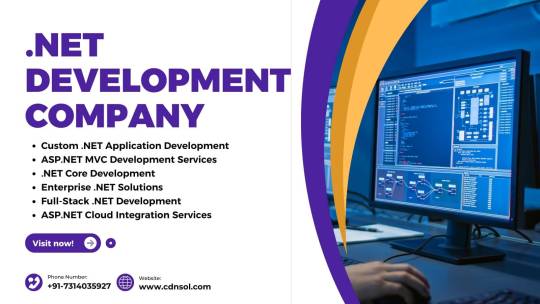
#.net development company#.net development services#.net application development company#best .net application development company#customized .net solutions#microsoft's .net technology#.net development#.net technology#asp.net development services#.net app development services#.net framework services#custom .net application development#enterprise .net solutions#asp.net mvc development services#full-stack .net development#asp.net cloud integration services#asp.net applications#.net solutions#.net core development
0 notes
Text
Discover Kiloview Bonding Solutions: P3 & P3 Mini for Seamless Streaming
New Post has been published on https://thedigitalinsider.com/discover-kiloview-bonding-solutions-p3-p3-mini-for-seamless-streaming/
Discover Kiloview Bonding Solutions: P3 & P3 Mini for Seamless Streaming
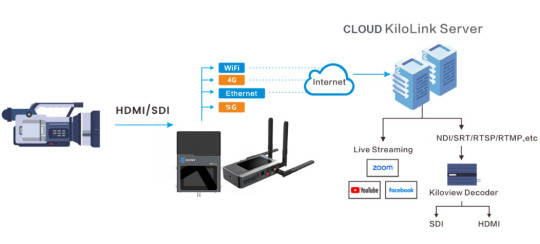
Discover the power of Kiloview’s P3 and P3 Mini cellular bonded encoders, designed for seamless live streaming with multi-network bonding and reliable video transmission. This video explores their flexible integration with top streaming platforms, key product specifications, pricing, and diverse industry use cases. With advanced NDI support, these compact, cost-effective encoders streamline video workflows without extra hardware, making them ideal for outdoor streaming and professional productions.
Watch the full video below:
youtube
Kiloview P3 Mini
The P3 mini Wireless Bonding Encoder is the perfect outdoor live streaming device built on patented KiloLink bonding transmission technology. The P3 mini features professional-grade antenna isolation design, allowing for the effective bonding and connection of multiple channels (supporting 3*4G cellular network + 1WiFi + 1*RJ45 Ethernet port), boasting exceptional anti-interference capability and stable transmission performance. It is equipped with dual input interfaces for 3G-SDI and HDMI, supporting up to 1080P60 video resolution. Additionally, the P3 mini is equipped with a 5000mAh battery with 4-hours continuous operation and supports PD fast charging, fully meeting versatile application scenarios.
3x 4G integrated modems with WiFi connectivity
USB C power delivery
Fast charging
3-inch screen with touch screen controls
Small and easy to carry
4G connectivity
1080p60 HDMI – SDI H.264/H2.65
P3 Mini Verticals
Small TV and radio for sports and racing events for on the go connectivity and social media streaming
Remote engagement style for small events and news gathering
Few camera productions with laptops and minimal setup required mainly social media streaming
Kiloview P3 Bonding Encoder
Kiloview P3 Cellular Bonding Encoder is a new generation of 5G bonding video encoder based on KiloLink, supporting multi connections bonding: 4-channel 5G cellular network, WIFI and Ethernet. P3 is equipped with dual video inputs of 3G-SDI and HDMI with resolution up to 4Kp30 through its HDMI input and up to 1080p60 through its SDI input. Upgraded H.265 encoding capability and perfectly adaption to KiloLink Server ensure the best quality of multi-protocol live streaming and video transmission.
4G and 5G modular modems with WiFi conenctivity
Redundant battery and long lasting streaming sessions
4.3-inch screen with touch controls
Modular design over time
5G coverage covers most challenging situations
4K30p HDMI
1080p60 SDI
H.264/H.265
KILOVIEW P3 Wireless Bonding Encoder Complete Bundle Solutions Including Modems
P3 Applications
Sports
Racing events
Concerts
Healthcare
Enterprise
e-Sports
Big / Mid TV and radio broadcasting
Remote engagement style for events
Events for high numbers with multi camera and REMI producitons
Which P Series Encoder is Right for your Workflow?
Small business with no 5G requirements
Easy to install in critical spots like racing cars or drone applications
1080p or HD maximum resolution needed
Low cost 4G data plans accordingly to business needed
5G essential requirements for demanding zone with low cellular network coverage
Long lasting streaming with hot swappable battery
4k up to 30p required
Eng beltpack style
Daily usage for news and sports
KiloLink Server Pro
Unlimited Streaming Channels
Patented KiloLink Transmission Technology
Direct output of NDIHX
Multi-Link Bonding
Flexible Operation via Web Interface
Centralized Firmware Management & Upgrades
Remote Control of Devices
Easy to Deploy and Operate
Workflows

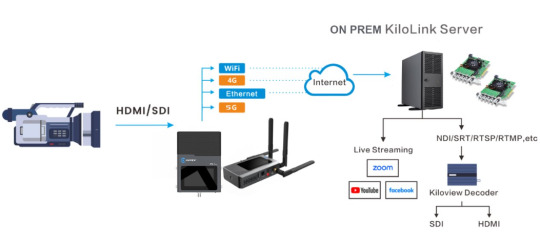


#4g#4K#5G#amp#applications#battery#bundle#Business#Cars#channel#connectivity#continuous#data#Design#devices#drone#easy#enterprise#Events#fast charging#Features#firmware#Full#Hardware#hdmi#healthcare#Industry#integration#interference#it
0 notes